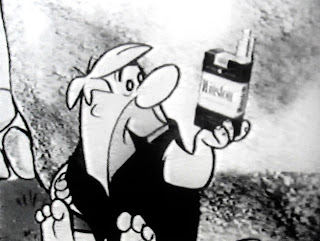 |
| Ken Russell's The Devils (1971) |
On a hot August day in 1634, Father Urbain Grandier, the priest of the church of Saint Croix in the French city of Loudun was burned alive at the stake for the crimes of sorcery and spell casting as well as his responsibility in the possession and corruption of the enclosed Ursuline nuns of the city during what has been come to be known as the Loudun Possessions.
 |
| Urbain Grandier |
Good looking, polished, popular, with no hesitation in disobeying his vow of abstinence, Grandier had made friends with many of the women in his parish, while becoming intractable enemies with their politically and religiously well connected husbands and fathers. Most dangerously of all, Father Grandier had also made an enemy of the defacto leader of France, Armand Jean du Plessis, Cardinal Richelieu, so that when the head of the local Ursuline convent, Sister Jeanne des Agnes and most of her fellow sisters showed signs of demonic possession, writhing in ecstasy, making obscene offers to the priest all the while claiming that the person inflicting them with Devils, was none other than Urbain Grandier, the once well connected priest found himself friendless and alone on the path toward the fire.
 |
| Olive Reed as Urbain Grandier, The Devils (1971) |
Stripped, shaved, both of his legs broken through torture, Grandier was forced to crawl to the metal chair affixed to a large wooden stake surrounded by a huge pile of wood, soaked in holy water to make him burn longer, a loose garrote tied around his neck, and then the fire was lit. Priest stood by and waved the smoke away from Grandier so that he would not choke on the smoke before the fire reached him. They kept the fire low so that Grandier’s suffering would last as long as possible, though they would call to him again and again giving the priest the chance to confess to his crimes.
 |
| The trial commences, The Devils (1971) |
But he never did.
As the fire took its toll and Grandier’s spirit was finally allowed to leave this earth, he cursed his torturers to early deaths, and indeed his chief persecutor died exactly a year later to the day. But by then it was far too late for Grandier to take any pleasure in this small revenge as by then he was long since ash and dust.
 |
| One of Grandier's Persecutors, The Devils (1971) |
The story of Grandier’s sins and the sins committed against him are covered in great detail in AldousHuxley’s brilliant 1952 novel, The Devils of Loudun. A combination historical paper, psychological treatise and comic horror story, Huxley’s novel details with a mirthful tone, the way that one man, through his “sin”, can turn the whole world against him. Huxley turns a cruel eye toward Grandier, his foes, his torturers and most importantly the vain and spiteful Jeanne Agnes, whose utter boredom at convent life, her lust for Grandier a man she has never even met, her wish to be the center of something important and her disgust for the twisted hump on top of her back, combine to destroy a man in the most horrible way possible.
 |
| The "Question" is put to Grandier, The Devils (1971) |
The Devils is at times not so much a film as a hallucinatory trip through hell, a hell of repressed desires and hidden lusts, where Grandier, the only person honest in his sins, must be destroyed because of them.
 |
| Vanessa Redgrave and the possessed nuns of The Devils (1971) |
Starring as Grandier, Oliver Reed carries himself with a detached cynicism, recognizing that he is just one sinner surrounded by a world of people as equally ugly inside, and yet who can at the same time defend his town against armed intruders with nothing but bravery and a few dozen crossbows.
 |
| Grandier on the stake, The Devils (1971) |
Russell has often used very disturbing imagery of sexual and religious iconography combined with stunning violence and it is easy to understand why the Devils was long kept out of distribution.
 |
| Sister Jeanne in ecstasy. The Devils (1971) |
It is a deeply offensive movie on many levels, filled with images that are guaranteed to enrage and insult most true believers. And yet inside of all the ugliness a deeply moving story emerges of a man who has come to terms with his own sins, and who must pay because of it.
 |
| Grandier and the flames, The Devils (1971) |
As Grandier moves closer to his final fate Reed brings to the character a dignity and sense of knowing that as he continually suffers more physical abuse brings an almost Christ like calm to the character.
 |
| And all the world is against him, The Devils (1971) |
As Sister Jeanne, Vanessa Redgrave gives one of the bravest and most disturbing performances in cinematic history, playing a woman who allows the most hideous abuses to be heaped on her just to bring about the destruction of a man who she sees has having rejected her. Jeanne is beyond salvation, happy in her depravity, sealing her damnation in the end with one final obscene desecration. Redgrave is positively Shakespearean in the depth of her evil.
 |
| What follows is unspeakable, The Devils (1971) |
While it is true that The Devils suffers from many of the worst excesses of early 70’s film-making with its stilted imagery, overtly simple symbolism, excessive nudity just for the hell of it and in many cases caricature in place of character, it more than makes up for it with what is a compelling story about a flawed but heroic man facing a horrible fate and the Devils that brought him there.
The Devils (1971) Film Trailer











